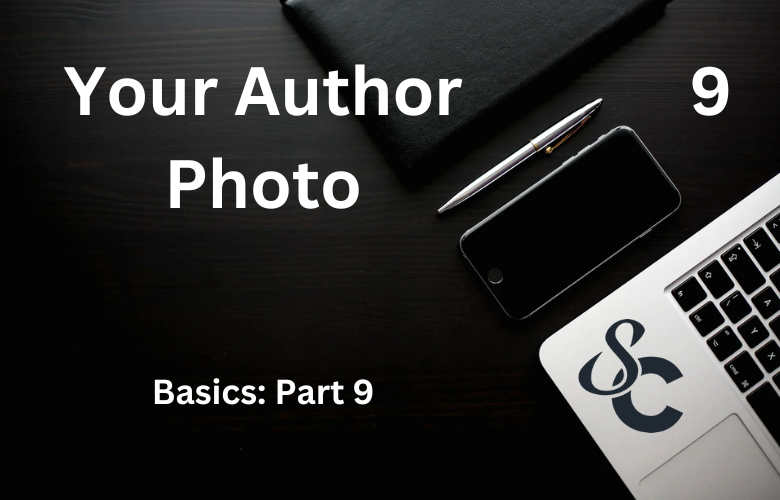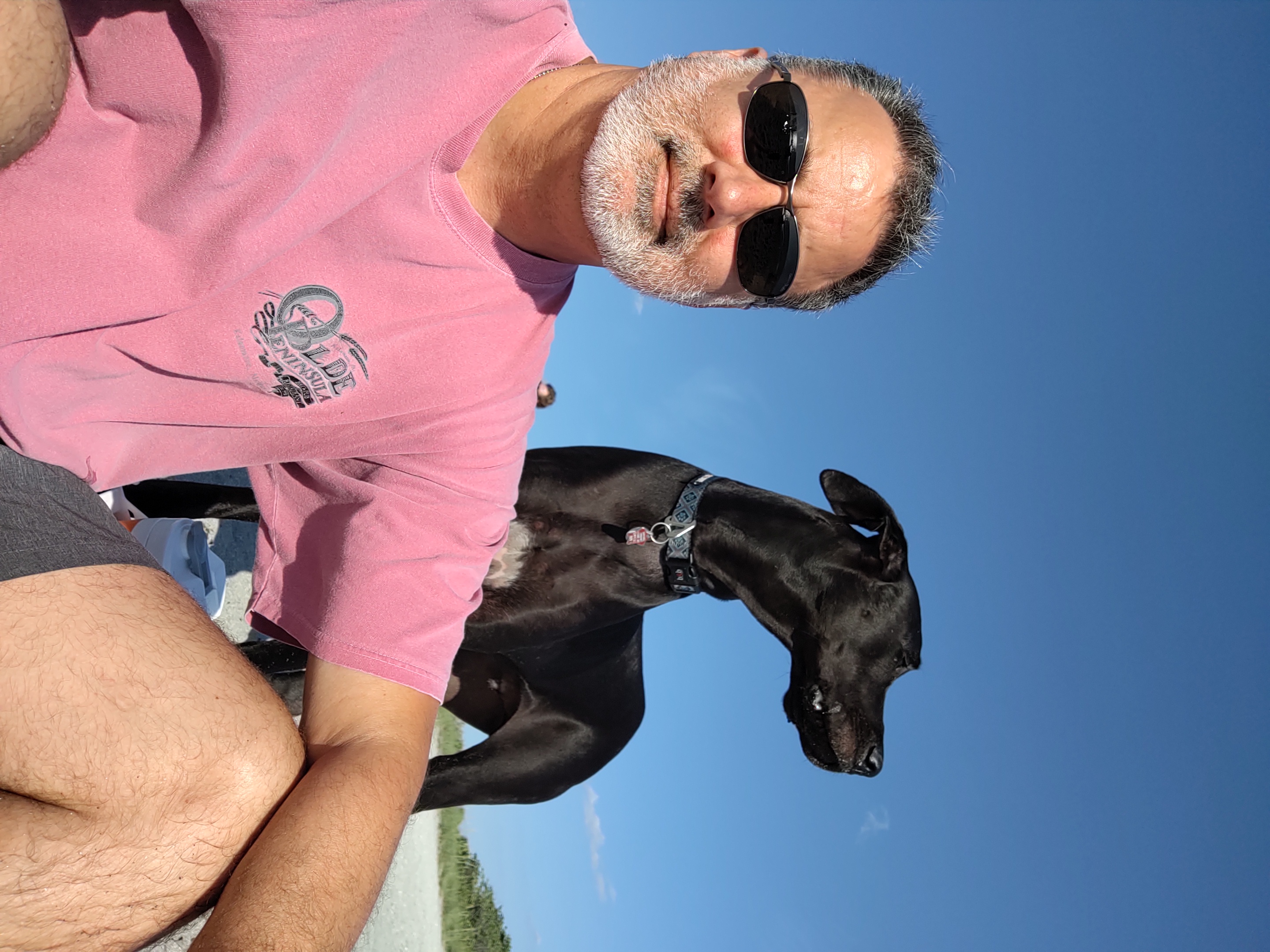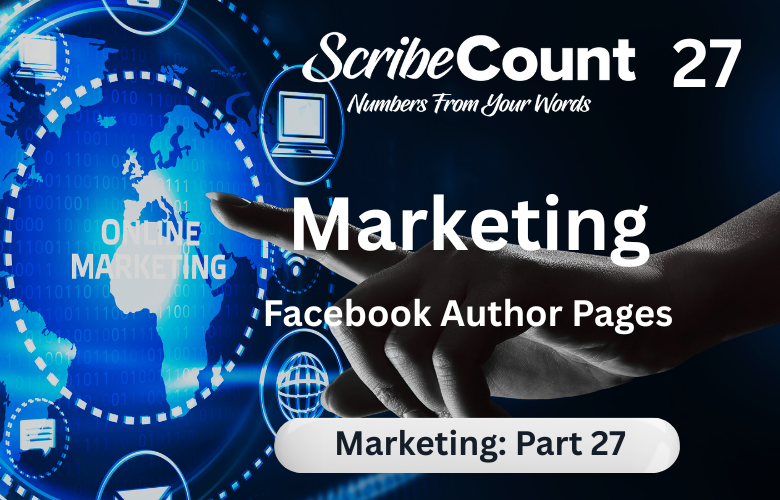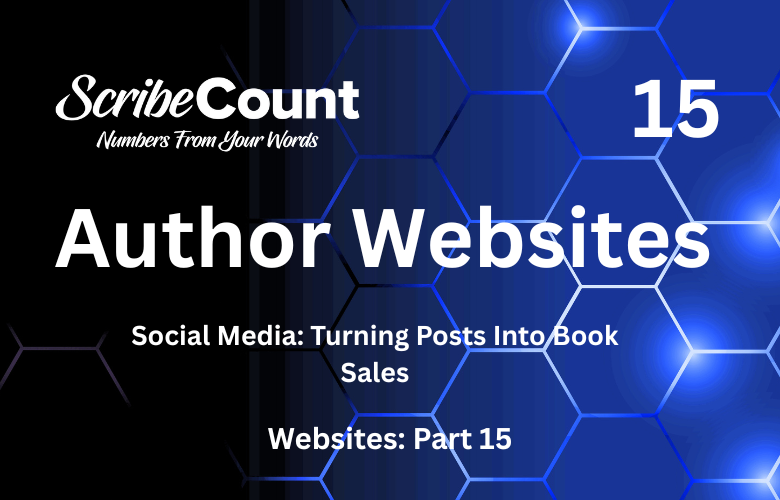Author Photo’s
There is one important quote to remember when it comes to your author photo.
“All companies are media companies.” - Gary Vaynerchuk
We mentioned this here as it’s something to keep in mind throughout the process of building your publishing business. With that quote guiding you, you’ll need to carefully choose the public “face” that goes with your books.
While all companies may be media companies that does not mean they have the same type of public face. Most companies utilize celebrities such as popular actors or sports icons to accomplish this. Sometimes all that’s needed is that person's familiar voice. James Earl Jones may be the voice of Darth Vader, but he’s also the voice of CNN. Michael Jordan is synonymous with Nike. VISA doesn’t tell you it's everywhere you want to be, Morgan Freeman does. And if I were to ask you “What’s in your wallet” you’d probably hear Samuel L. Jacksons voice in your head.
For authors, it's simpler. Only the A-listers have the money to air Super Bowl commercials. Other than the occasional online interview or public reading, the reader only knows an author through one medium, the author photo.
For authors, the photo on the back cover of the book is one of their most-used assets. It’s attached to their books, their website, their social media accounts, and even their online comments by way of their avatar. The author's face is the face of their publishing company. Wherever the company is present it’s the author's face that the reader will see first.
It’s important that that face, or face shot as it’s known, be a good one. In this case, one means several, each of them tailored for a unique purpose.
Some of you are reading this and cringing at the thought of being in front of a camera, or having your face plastered everywhere your books are. That’s understandable. But establishing a connection with the reader goes a long way toward making them that fan who buys your next book without even reading the blurb. An author's photo gives them a friendly image to connect to their written words. It moves you away from the unknown entity and into the realm of being an actual person. With a photo, there’s a face to go with the name, even if that name is a pen name.
So where to start?
Avoid the Selfie
Start with your computer, not with your phone.
It's tempting to do a quick scroll through your photo archive and pick out your favorite selfie, and there are times when that will work, but we’re talking about the back cover of your book, not your dating profile. If you write travel books that photo of you at the Grand Canyon or sitting atop Kilimanjaro will speak to your audience. If you write humor and have a shot of you wearing a silly hat, that might be perfect as well. Most of the time though a selfie has a limited lifespan. Remember, this is the public face of your company, and these photos are going to live forever on the back covers of your books for decades after you are gone. With that in mind, it’s a good idea to get some professionally done pictures for your books and leave the selfies for your blog and website.
It’s better to pull out your computer and do a little searching first. Start with the genre you write in and think about who your readers are. Search your favorite trade authors first and see what kind of photos you find. This is one area where I will bow to trade publishers. They have tons of data telling them what photos work best, so why not take advantage of that and see what the data tells them to do?
If you write non-fiction you would want to reflect your subject matter in your photo. If you write about business you would want to be dressed in a suit. If you write about chemistry or quantum mechanics you might pose in a lab coat or a college lecture hall. If you write about butterfly’s it might help to have one in the shot with you. Do you train dogs? Maybe have a cute puppy share the frame.
If you write fiction there are several options. Your photo should be genre-appropriate and target your book's audience. If you write cozy mystery’s you might adopt a well-lit photo of you relaxed in front of the typewriter. Psychological mysteries might need a more serious expression and perhaps a black-and-white photo. Writers of thrillers are required to be silhouettes of the author running through a dark alley. (That’s a joke, yet oddly accurate)
Doing a little comparative research will help. Pick a few of the A-list authors in your genre and go over their author photos. Note the clothes they wear. Whether they are posed or appear casual. The lighting. Are they inside or outside? Are they smiling? What’s in the picture with them? Make note of what appeals to you as a reader. If someone were to mention that author's name to you which of those pictures would enter your mind first? That’s the type of photo you want.
Pick several different photos that appeal to you. We’ll get to why you need so many in a few paragraphs.
Find a photographer.
A lot goes into a good author photo and a professional photographer will know how to get the best shots possible. Most will offer a variety of packages for the author or aspiring actor. If you wish to go outside what they offer, most will do so within reason and adjust the package price accordingly.
They will need some guidance from you. This is when you show them the author's pictures that appealed to you. The more samples you have the better. From them, the photographer can make decisions regarding light and background, expression, makeup, if needed, and hair. If you wish to be photographed outside he’ll need to find locations and secure access to them for the time of day needed. The wardrobe is something to discuss and if you wish to change clothes (you do) they will need to have a place for you to do so. All photographers have a portfolio for potential customers they can peruse. Paging through theirs and comparing your sample photos will help you find a photographer that is on your lane.
Before the day of the shoot, you should practice. Aspiring actors spend hours facing themselves in the mirror perfecting their expressions for whatever a director may call for. They can instantly morph their face from brooding, to angry, to happy, to terrified. You’ll need to do the same in the mirror until you have the expression you want down pat and you can repeat it without thought. If you can do this the photographer will do the rest. They will know when to prompt you to smile, or turn your head, or lower your chin, etc.
Hair and make-up will need to be done before the shoot as few photographers are proficient enough or willing to include that service without hiring someone with those skills to be there. This might be a good time to find a professional as the make-up you apply every day can be much different from the make-up applied for the camera.
Have several outfits picked out and make sure they are all clean and ready to go the day of the shoot. A dress rehearsal is a good idea as that shirt may lose a button or that favorite pair of pants may have acquired a stain without you realizing it. Once the shoot starts there’s no time to fix such things.
A photoshoot is a limited-time engagement. Most photographers have entered the digital age so there are no real costs in reference to the number of pictures they take. The only limit is you. If you have done a good job of explaining what it is you are envisioning your photographer will do the rest. The better prepared you are the more photos can be taken.
Some things to keep in mind:
· The photographer will guide you through multiple photos and poses. Try to remember them while you are varying your expression through each.
· Take some full-body shots as well as close-ups, both sitting and standing.
· If you wear glasses, take photos with and without them.
· Take the same photos wearing multiple outfits. Change your hair for some of them if possible.
· Follow the directions of the photographer, even if they don’t immediately make sense to you.
· Be quick when changing your clothes, most sessions are limited by time and you want to get as many photos as possible within that time.
· If you’ve used every outfit you brought fill the time with close-ups.
Why all the clothes?
Most readers assume that the picture of the author on the back of the book was taken recently. That’s not often the case. The pictures you take in that one photoshoot may be enough to last you for several years of publishing. You simply use a new outfit for each book. The advantage of this is that you appear forever young.
In the end, you may choose only one “official” author photo, but you can use the remaining photos for several reasons. Social media, websites, newsletters, appearances, and advertisements, are all media where a good author photo is needed. So keep every photo you paid for, you never know when you might need them.
So the photoshoot is over, now what?
Since you’ve utilized a professional photographer you will have crisp, high-quality images to work with. Your photographer may offer to edit some of the best shots and clean them up a bit if needed. A stray hair, a shiny cheekbone, or some glare off your glasses is easily fixed. If the cost is an addition to the package you paid for there’s no need to make any decisions that day, you can always do them later once you’ve had time to go over them.
It’s a good idea to bring a high-capacity thumb drive to the shoot and take your photos home with you on that. Two would be safer.
· Request all photos be provided in both black-and-white and color.
· Discuss copyright. A photo credit will be necessary and they will have a sample of how they wish it to appear. Make sure you know who owns the copyright to your photo. Have paperwork expressing this.
· When it comes time to send this photo to someone online always send the original file. This should not be a version that was copied and pasted. If you use a photo from your social media account or website that photo has been reformatted and compressed and the quality will be poor. The original file will always be of higher quality.
A good author photo speaks loudly. It provides a connection with your readers that will last for as long as you continue to write. It's often the reader's first impression if they find your book on a shelf in a store. First impressions are important, you should make yours a good one.
What about social media?
With the exception of LinkedIn, social media is less formal. How less formal varies wildly by platform. Each of them exists for different goals and audiences. You’ll want to tailor your profile at each accordingly.
According to research, 63% of singles are more likely to swipe right on profiles featuring dogs. This is especially true for women swiping on men.
Different pics for different platforms.
You may have seen “The Dolly Parton Challenge” on social media. It was a way to make fun of the differences in people's social media photos depending on what platform they were posting them on.
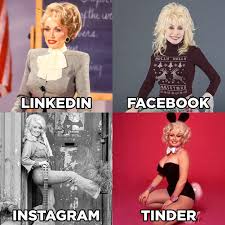
While done for fun there’s still some truth there. A photo delivers a message, and you want to be sure you are sending the right one.
You should have different photos for different profiles depending on the platform and the image you want to project. Each platform serves a different purpose and may require a more professional or casual appearance. This allows you to tailor your image to the specific audience on each site; for example, a LinkedIn profile might call for a more formal headshot while a personal Facebook profile could use a more relaxed photo.
If you choose to go this route remember to maintain consistency with your identity. Use photos that fit the platform and audience but ensure that your overall appearance remains readily recognizable. If all of your photos were placed side by side it should be easy to tell that they are all the same person.
Can’t afford a photographer right now? AI is here to help.
There are several services out there that provide AI assistance. Some even offer Author Packages.
How it works is that you upload several headshots of your own into their system and then let the AI convert those photos into a variety of different headshots. The software can change your expression, your clothes, the background, and, well, just about anything.
Here are a few that are recommended by ScribeCount users.
Secta offers a Self-Publishing Author Press Kit. This includes “A polished author headshot, ideal for books, online profiles, or promotional use.”
Their Professional Plan starts at $49 and includes over 300 photos in a choice of over 90 styles.
Users liked the ability to create social media platform-appropriate headshots from a single upload. Options include LinkedIn, Facebook, Instagram, Twitter/X, and YouTube.
Prices start at $19.99.
Alter AI has a feature that lets you play around with their options before you buy.
Their basic plan starts at $24.99 and includes 80 headshots.
Unsure about which AI photo is best?
Try Photofeeler
Pay $9 and have 40 people vote on your profile picture within a few hours. Return the favor for others and use it for free.
The downside of AI
Should you decide to go with the AI alternative, beware of filter overuse. While it might be tempting to give yourself that chiseled jawline or that darker hair, remember that your readers may meet you in person someday. You want to be yourself, not a caricature of yourself. Too much editing was perceived as a major negative in case studies, so keep it real as much as possible.
Conclusion
Remember; “All Companies are Media Companies” and like it or not, profile pictures are essential to modern communication. This is particularly true for authors looking to garner an audience through social media. Studies have explored every aspect of the profile picture and its impact on those viewing it. Everything from wearing sunglasses (Don’t!), how much to smile (Show your teeth), what to wear (Formal dress wins), how much of yourself to show (Full headshot or torso shot), to editing (as little as possible), it all has an impact on the people viewing it. You’ll want to consider all of these items when choosing the picture that represents you and your books.
So make a list, practice your smile, borrow a dog, and get in front of that camera. Your audience awaits.
